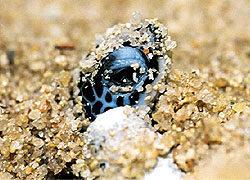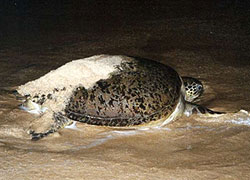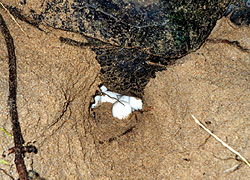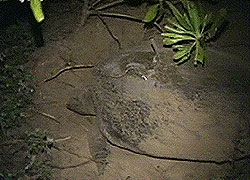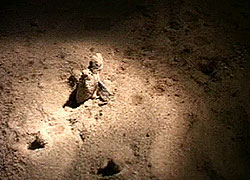Sea turtles recorded in Hong Kong
|
Green Turtles - Life history Here we use Green Turtles as an example to illustrate the bizarre life of sea turtles both on land and in the sea. Other sea turtles have a more or less similar life history except the Flatback Turtles which do not undergo the pelagic stage in the juveniles.
Hatchlings and juveniles Upon hatching, baby sea turtles will crawl to the sea and swim to the pelagic ocean, if they manage to avoid the predation of crabs, sea birds and other animals on the beach. They will stay around the seaweed beds which provide shelter and food. This stage is a black box to scientists as it is difficult to trace and study sea turtles of this age. Sub-adults Sub-adults (15-20 years old) will return and settle down in the coastal water as their home for the rest of their life. These foraging sites are usually at least a few hundred km away from their natal beaches.
Nesting at natal beaches Upon maturity (about 20 to 30 years old), adults will travel a very long distance to the coastal waters nearby the natal beaches to breed and females lay eggs every few years. How and why sea turtles would swim such a long distance and precisely return to their natal beaches to lay eggs is largely a mystery. Female turtles lay eggs at night. They can lay about 100 eggs in each nesting. It takes them about 10 to 14 days to develop another batch of eggs if they manage to do so.
Incubation
Each egg is about the size of a table tennis ball. It takes about 50 to 60 days for the incubation. After hatching, they will leave the pit at night together with their brothers and sisters. You can enjoy the footage of baby green turtles hatched at Sham Wan by clicking the video here. |
|||||||||||
|
|||||||||||

